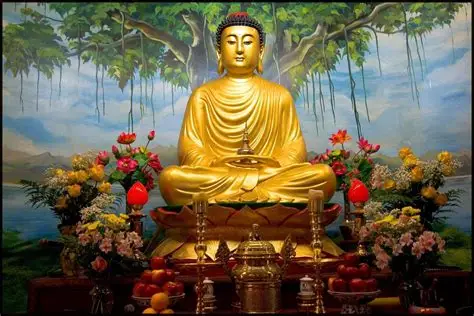
Bihar, located in eastern India, is the spiritual heartland of Buddhism. Bihar Buddhist Circuit Tour invites travelers to walk in the footsteps of Siddhartha Gautama—from his quest for truth to his enlightenment and teachings. This circuit connects some of the most important Buddhist pilgrimage sites in the world, offering a profound blend of history, spirituality, and cultural richness.
Whether you’re a devout pilgrim, a history enthusiast, or a seeker of peace, the Bihar Buddhist Circuit is a transformative experience.
1. Bodh Gaya – The Seat of Enlightenment
Bodh Gaya is the most sacred Buddhist site globally, where Prince Siddhartha attained enlightenment under the Bodhi Tree.
- Mahabodhi Temple: A UNESCO World Heritage Site with a towering spire and the sacred Bodhi Tree.
- Great Buddha Statue: A 25-meter tall statue surrounded by serene gardens.
- International Monasteries: Temples built by countries like Thailand, Japan, Bhutan, and Myanmar reflect global Buddhist traditions.
Best time to visit: October to March for pleasant weather and spiritual gatherings.
2. Rajgir – The Teaching Ground
Rajgir was a favorite retreat of Buddha and the site of many important discourses.
- Griddhakuta Hill (Vulture’s Peak): Where Buddha delivered the Lotus Sutra and other teachings.
- Venuvana Vihara: The first Buddhist monastery gifted to Buddha by King Bimbisara.
- Peace Pagoda: A white stupa built by Japanese Buddhists, accessible via a scenic ropeway.
Tip: Don’t miss the hot springs and ancient caves nearby.
3. Nalanda – The Ancient University
Nalanda was one of the world’s first residential universities and a major center of Buddhist learning.
- Nalanda University Ruins: Spread across 14 hectares, showcasing red brick structures and lecture halls.
- Nalanda Archaeological Museum: Houses ancient manuscripts, sculptures, and relics.
- Xuanzang Memorial Hall: Honors the Chinese monk who studied and taught here.
Best time to visit: November to February for cooler temperatures.
4. Vaishali – The Republic of Dharma
Vaishali is where Buddha gave his last sermon and announced his Mahaparinirvana.
- Ashokan Pillar: Erected by Emperor Ashoka to commemorate Buddha’s visit.
- Relic Stupa: Believed to house Buddha’s ashes.
- Buddha Stupa I & II: Important archaeological sites with historical significance.
Tip: Visit during Buddha Purnima for special ceremonies and cultural programs.
5. Kesaria – The Tallest Stupa in India
Kesaria houses one of the largest and tallest Buddhist stupas in the country.
- Kesaria Stupa: Believed to be built by Lichchavi rulers and visited by Buddha during his final journey.
- Surroundings: Peaceful countryside ideal for reflection and photography.
Best time to visit: October to March
6. Other Notable Stops
- Barabar Caves: Oldest surviving rock-cut caves in India, used by Buddhist monks.
- Ghosrawan and Gurpa: Lesser-known but historically rich sites associated with Buddhist teachings.
- Champanagar and Dona Stupa: Linked to Buddha’s relics and early disciples.
Sample Bihar Buddhist Circuit Tour Itinerary
7-Day Spiritual Trail
- Day 1: Arrive in Bodh Gaya, visit Mahabodhi Temple
- Day 2: Explore monasteries and Great Buddha Statue
- Day 3: Drive to Rajgir, visit Vulture’s Peak and Peace Pagoda
- Day 4: Nalanda ruins and museum
- Day 5: Vaishali pilgrimage sites
- Day 6: Kesaria Stupa and countryside
- Day 7: Return to Bodh Gaya or onward travel
Travel Tips
- Getting There: Gaya Airport and Patna Airport are well-connected; trains and buses available.
- Local Transport: Taxis, auto-rickshaws, and tour buses.
- Accommodation: Guesthouses, monasteries, and hotels in Bodh Gaya, Rajgir, and Nalanda.
- Etiquette: Dress modestly, remove shoes at temples, and respect silence zones.
Bihar Buddhist Circuit Tour is more than a pilgrimage—it’s a journey into the heart of peace, wisdom, and history. Whether you’re meditating under the Bodhi Tree or exploring ancient ruins, this tour offers a soulful experience that stays with you long after you return.
